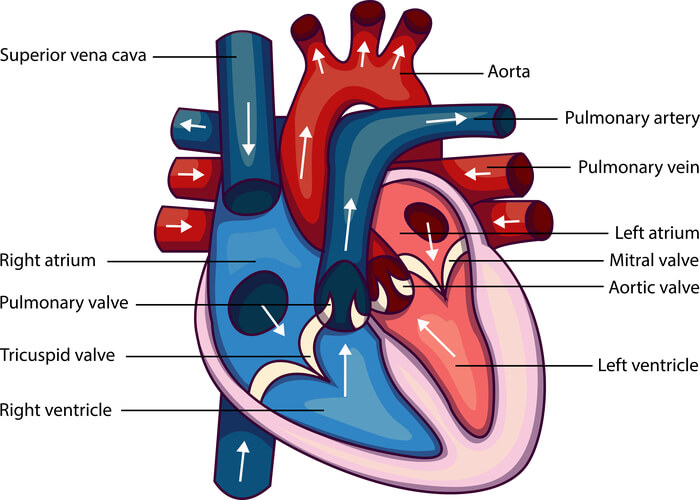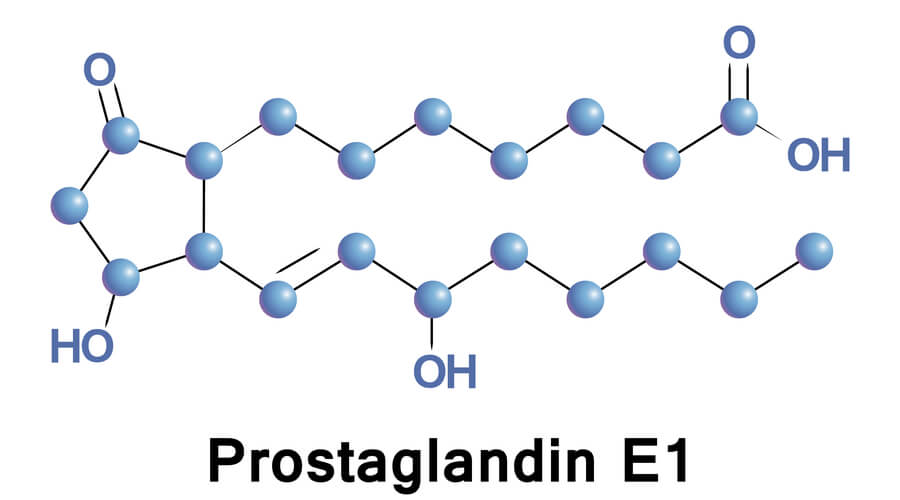Definition
The ductus arteriosus (also known as the ductus Botalli) is a short blood vessel that connects the pulmonary artery with the aorta in fetuses.
Ductus Arteriosus Location
The ductus arteriosus is a blood vessel that forms from the six aortic arches in the heart.
It creates a connection between the first portion of the pulmonary artery and a region near the end of the descending aorta (the isthmus of the aorta).
This connection is usually only found in the hearts of fetuses, but can sometimes be present after birth (we will touch more on this later!)
Ductus Arteriosus Function
During the development of the fetus, much of the fetus’ oxygen is received through the placenta, where the mother’s blood oxygenates that of the fetus – this is because, at this stage, the fetus’ lungs are filled with amniotic fluid, and so cannot be used themselves to oxygenate the blood.
As such, fetal blood does not need to flow through the pulmonary circulation – which is where the ductus arteriosus comes in.
This opening in the aorta provides a ‘bypass’ of sorts for the fetal blood, allowing it to directly enter the systemic circulation.

Ductus Arteriosus Closure
So we know that the ductus arteriosus is an integral part of the anatomy of the fetal heart, but it is usually not observed any longer some time after the baby is born.
As such, this raises the question – when does the ductus arteriosus close?
First of all, there are a couple of factors that lead to the closure of the ductus arteriosus upon birth:
- An increase in the level of oxygen – this is because the newborn’s lungs begin working upon birth
- A decrease in the level of prostaglandin – the infant stops receiving the mother’s supply of prostaglandin when the umbilical cord is detached
The reason why this opening must close upon birth is because the infant must begin using its lungs to take in oxygen, as they can no longer have oxygen provided to them by their mother.
Therefore, upon closure after birth (usually within the first 24-72 hours after the fact), the pulmonary circuit can be completed, and the infant’s blood can begin collecting oxygen from the lungs.
Patent Ductus Arteriosus
In some rare instances, however, the ductus arteriosus does not close after birth – this is a condition called patent ductus arteriosus.
This condition allows some oxygenated blood from the left heart to flow back into the lungs, as it can be pumped from the aorta into the pulmonary artery, which can lead to a host of symptoms and complications.
Patent Ductus Arteriosus Symptoms
This can cause a host of issues later on in an infant’s life, namely within the first year. These can include:
- Poor eating habits (and so, failure to gain weight)
- Rapid heart rate (tachycardia)
- Increased rate of breathing
- Easy tiring
Patent Ductus Arteriosus Causes
There are several factors that can play a role in the incidence of patent ductus arteriosus, most commonly:
- Genetic factors – there are several genetic syndromes which increase the risk of developing patent ductus arteriosus, such as chromosomal aberrations (e.g. trisomy 21), single-gene mutations (e.g. Carpenter’s syndrome), and X-linked mutations (e.g. incontinentia pigmenti)
- Rubella infection – if the mother is infected with rubella during the first trimester of pregnancy (especially in the first four weeks), then the risk is raised
- Premature birth
Patent Ductus Arteriosus Complications
If the ductus arteriosus fails to close after birth and is left untreated, then, over time, a wide range of complications can occur as a result of the heart having to work harder to pump blood, or blood not being pumped properly.
These include:
- Pulmonary hypertension – this is caused by too much blood circulating through the main arteries of the heart, and can cause permanent lung damage
- Heart failure – is often caused by the enlargement and weakening of the heart
- Eisenmenger’s syndrome – a syndrome where left-to-right shunting occurs, which can lead to symptoms such as cyanosis (reduced concentration of oxygen in the blood)
- Endocarditis – inflammation of the heart lining due to bacterial infection
Patent Ductus Arteriosus Treatment
Although the consequences of leaving patent ductus arteriosus untreated can be severe, the good news is that, if caught early, it can be treated effectively, and a full recovery can be made.
Treatments are often most effective when administered not long after birth.
Several treatments are available to treat this condition; these include:
- Medication – Drugs such as indomethacin and a special form of ibuprofen can be administered (sometimes intravenously) to help close the opening
- Transcatheter closure – a catheter is inserted through a blood vessel and guided towards the heart, where it will then place a blocking device into the opening
- Surgical therapy – if the opening is large, or it fails to close by itself (either through medication or over time), then surgery will be undertaken, and the opening will be ligated




